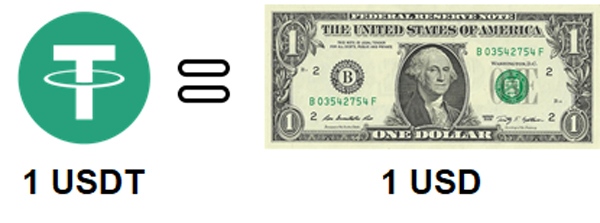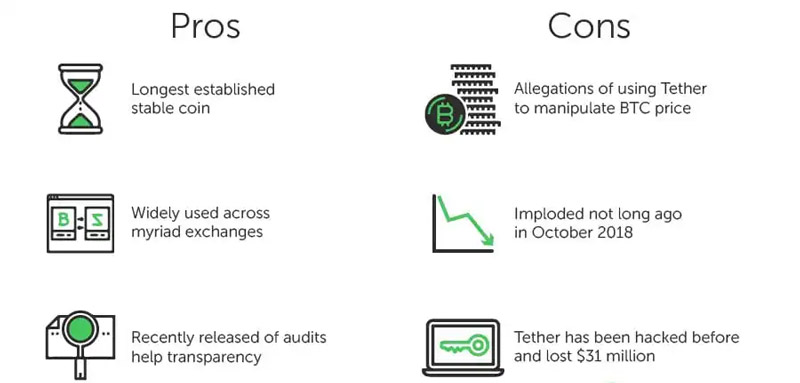
What is Tether Dominance? 0 to 100 About USDT
In the world of cryptocurrency and market analysis, “Tether Dominance” is a term with significant importance. USDT, a stablecoin pegged to the US dollar, has become a cornerstone in the crypto space due to its stability. USDT represents the ratio of Tether’s market value to the entire cryptocurrency market value. This metric is widely used by traders and analysts to gauge market sentiment, fund flows, and potential trends.
This article from Omega Finance aims to provide a unique overview of what Tether Dominance is, why it matters, how it works, the factors affecting its fluctuations, and how traders can use it as an indicator to make more informed trading decisions.
What is Tether Dominance?
Tether Dominance refers to a stablecoin designed to maintain a 1:1 value with the US dollar, offering a stable alternative in the often volatile cryptocurrency market. This stablecoin is widely used on exchanges as a stable trading pair and is a popular asset for holding funds during market downturns or uncertain periods. But let’s look at why USDT is so dominant:
- Stability: The stable price of USDT against the USD makes it ideal for risk-averse traders.
- Liquidity: With enormous daily trading volumes, Tether Dominance provides unmatched liquidity on exchanges.
- Utility: It acts as a bridge between fiat and cryptocurrencies, making it essential for global traders.
What is the Formula for Tether?
Tether Dominance is a metric representing USDT’s market value relative to the total cryptocurrency market value. Expressed as a percentage, it provides insight into how much of the total cryptocurrency market is represented by USDT. When Tether-Dominance rises, it often signals a shift in market sentiment, as more capital flows into USDT, likely due to market volatility or declining asset prices.
Tether Dominance = (Market Cap of USDT/Total Market Cap of Cryptocurrency)*100
The Importance of USDT
USDT acts as a sentiment gauge, reflecting traders’ perceptions of the market. Here’s why it is important:
- Risk Aversion: A high USDT Dominance means traders are moving funds into a stablecoin, suggesting they are risk-averse and possibly expecting a market downturn.
- Market Direction: An increase in USDT is often linked with asset price declines, while its decrease usually corresponds with an uptrend in other cryptocurrencies.
- Liquidity Indicator: High USDT levels indicate that capital is parked in USDT, which can quickly move to other assets, activating liquidity and potentially signaling future buying.
Why Does Tether Fluctuate and What Does It Mean?
Tether-Dominance fluctuates based on the relative growth of USDT’s market cap and the overall crypto trading market. Here are typical scenarios and their implications:
- Rising Tether Dominance: This usually happens during market corrections or downtrends. As the prices of other cryptocurrencies drop, investors shift funds to USDT to preserve value, thus increasing its market share.
- Declining USDT: Lower levels often occur in bullish markets. As investors gain confidence, they convert USDT to other cryptocurrencies like Bitcoin, reducing USDT’s market share.
Using USDT as an Indicator
How can USDT be used? USDT, like various forex oscillators and indicators such as MACD or RSI, can be a helpful tool for making informed trading decisions in forex. Here’s how traders generally interpret this metric:
Entry and Exit Signals
- High Tether Dominance: Often signals that the market is cooling or uncertain. Traders may take this as an opportunity to avoid buying until dominance decreases.
- Low USDT: Indicates an active market with funds flowing from USDT to other assets. This could signal an opportunity to explore long positions in other cryptocurrencies.
Identifying Trends with Tether Dominance
- Steady Increase in USDT: May suggest an upcoming market correction or a potential downtrend.
- Gradual Decrease: Could indicate the start of a bullish cycle as funds are allocated to riskier assets.
Confirming Market Reversals
A sudden rise in USDT after a bullish trend can signal a market shift. Conversely, a decline after a downtrend may confirm a reversal towards an uptrend.
Factors Affecting Tether Dominance
Let’s look at the factors impacting USDT:
Market Sentiment and Economic Conditions: In times of economic uncertainty, like fears of inflation, rising interest rates, or geopolitical tensions, more funds tend to flow into USDT as a safe haven.
Regulatory News: Regulations targeting stablecoins or cryptocurrencies can affect Tether Dominance, influencing whether funds stay in or leave USDT.
Supply Mechanism: When USDT issues or redeems large amounts of USDT, it directly impacts Tether-Dominance. Increased USDT supply often indicates a demand for stability, which may signal an impending downturn.
Demand and Trading Pairs: Since many exchanges use USDT as the primary trading pair, demand for it on exchanges can lead to short-term spikes or drops in USDT.
Limitations of Relying Solely on USDT
While USDT provides valuable insights, it’s essential not to rely on it as a standalone metric. Here are some limitations of depending solely on USDT:
- Ignores Specific Market Conditions: Tether Dominance may offer a broad view, but it might not reflect nuanced trends in specific sectors like altcoins or NFTs.
- Lagging Indicator: USDT might reflect changes that have already occurred, meaning it can sometimes lag behind real-time price changes.
- Best Understood with Other Metrics: USDT is best analyzed alongside other metrics, like Bitcoin and Ethereum dominance, to get a more comprehensive market picture.
Trading Strategies with USDT
In this section, we’ll look at methods and strategies for using this stable coin:
Capital Allocation Based on Trend
Traders may adjust their portfolio based on USDT trends. For example, during times of rising USDT, conservative traders may allocate more of their portfolio to stablecoins or low-volatility assets.
Pairing with Technical Analysis
Traders can use USDT alongside technical analysis indicators like the Relative Strength Index (RSI) or moving averages for precise decision-making. For instance, high Tether Dominance combined with an oversold RSI can signal a buying opportunity in other cryptocurrencies.
Hedging Strategies with Tether Dominance
In uncertain markets, rising Dominance may encourage traders to hedge their position by holding USDT, while a decline could signal reducing hedges and increasing participation in crypto trades.
Conclusion: Leveraging Tether as Part of Your Strategy
Tether Dominance is a dynamic and influential metric, acting as a barometer of market sentiment, liquidity preferences, and potential directional shifts in the crypto market. By tracking it, traders can gain insights into the broader market outlook, make timely entries and exits, and adjust their risk levels accordingly. However, like any tool, it performs best when used alongside other indicators and methods in technical and fundamental analysis.
Understanding what USDT is and incorporating it into your trading strategy can empower you to navigate the crypto market with greater accuracy, confidence, and awareness of capital flows in this volatile environment.







